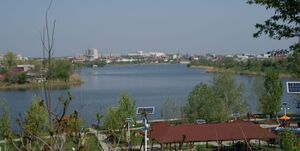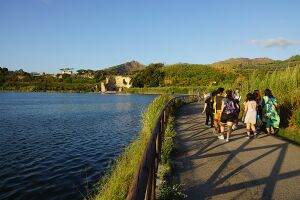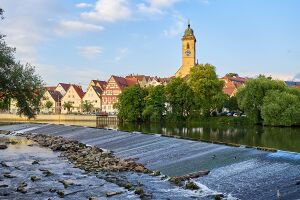WAVE Online Seminar Working Groups 2021: Difference between revisions
Jump to navigation
Jump to search
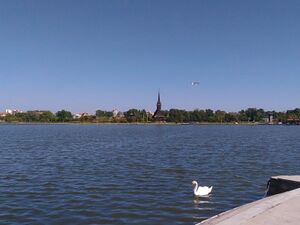
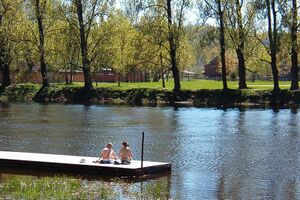
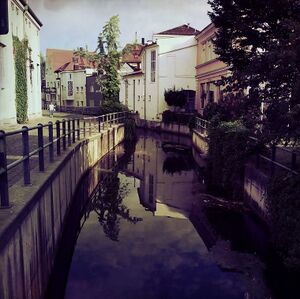
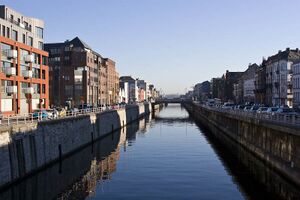
(Undo revision 347 by Andrei.bogdan (talk)) Tag: Undo |
No edit summary |
||
| Line 218: | Line 218: | ||
---- | ---- | ||
[[Category:WAVE Case Study 2021]] | |||
[[Category:WAVE Case Study]] | |||
=== [[Lacul Siutghiol 1 Team 2 Living Lab 2021]] === | |||
=== [[Lacul Siutghiol 2 Team 3 Living Lab 2021]] === | |||
== Working Groups in Bucharest, Romania == | |||
=== [[Lacul Tei WAVE Living Lab 2021]] === | |||
=== [[Lacul Plumbuita WAVE Living Lab 2021]] === | |||
=== [[Lacul Fundeni Team 1 WAVE Living Lab 2021]] === | |||
=== [[Lacul Fundeni Team 2 WAVE Living Lab 2021]] === | |||
== Working Groups in Tartu, Estonia == | |||
=== [[Tartu Upstream WAVE Living Lab 2021]] === | |||
=== [[Tartu Downstream WAVE Living Lab 2021]] === | |||
== Working Groups in Naples, Italy == | |||
=== [[Baia Wave Living Lab 2021]] === | |||
=== [[Fusaro Lake WAVE Living Lab 2021]] === | |||
=== [[Miseno Lake WAVE Living Lab 2021]] === | |||
=== [[Water and Heritage WAVE Living Lab 2021]] === | |||
== Working Groups in Nürtingen, Germany == | |||
=== [[WAVE Team 1 Nuertingen 2021|Wave Team 1 Nürtingen 2021]] === | |||
=== [[WAVE Team 2 Nuertingen 2021|Wave Team 2 Nürtingen 2021]] === | |||
=== [[WAVE Team 3 Nuertingen 2021|Wave Team 3 Nürtingen 2021]] === | |||
=== [[WAVE Team 4 Nuertingen 2021|Wave Team 4 Nürtingen 2021]] === | |||
=== [[WAVE Team 5 Nuertingen 2021|Wave Team 5 Nürtingen 2021]] === | |||
=== [[WAVE Team 6 Nuertingen 2021|Wave Team 6 Nürtingen 2021]] === | |||
== Working Groups in Freising, Germany == | |||
=== [[WAVE Team 1 Freising 2021]] === | |||
=== [[WAVE Team 2 Freising 2021]] === | |||
=== [[WAVE Team 3 Freising 2021]] === | |||
== Working Group in Neubrandenburg, Germany == | |||
=== [[WAVE Living Lab Neubrandenburg 2021]] === | |||
== Working Groups in Brussels, Belgium == | |||
=== [[WAVE Living Lab Brussels 2021]] === | |||
Revision as of 17:15, 27 March 2021

Coastal Lake in Contanta, Romania, Lacul Tabacerie, Source: flickr.com/creative commons by ICI

Emajõgi river in Tartu, Estonia, Source: flickr.com/creative commons by [1]

Moosach in Freising Source: flickr.com/creative commons by [2]

Brussels Canal Source: flickr.com/creative commons by [3]
Working Groups in Constanta, Romania
Constanta WAVE Living Lab 2021
Lacul Tăbăcăriei Team 1 Living Lab 2021
>>>back to working groups overview
Rationale
- Why do you think this case is relevant? What is your hypothesis considering the landscape challenges?
- Format: 3-4 sentences
Location and scope
You can edit this map with the map editor
Water as a natural system
Geomorphology, typologies and dynamics of water areas
- Describe the water areas of your area in the contxt of the wider water system
- How does water appear in the landscape of your living lab? What types of water areas are common?
- Please identify the water bodies' catchment areas, tributaries and floodplains
- Which dynamics do these water areas have?
- Have there been any flood events in the past?
- add 2-3 graphical representations to the image gallery, you can add more if you like
- Yourcase watersystem1.jpg
add a caption
- Yourcase watersystem2.jpg
add a caption
- Yourcase watersystem3.jpg
add a caption
Water as a living space
- Which habitats can be found in and along the water areas of your area?
- How is the water quality in your water areas?
- Which areas are still natural, which are urbanised/artificial?
- Are the rivers permeable for fish or blocked by artificial elements?(approx 200 signs)
- add 1-2 graphical representations to the image gallery, you can add more if you like
- Yourcase wateraslivingspace1.jpg
add a caption
- Yourcase wateraslivingspace2.jpg
add a caption
- Yourcase wateraslivingspace3.jpg
add a caption
Blue and Green Infrastructure
- What are the major potential elements of a green/blue infrastructure network? Are these likely to change/disappear? Why is that?
- You find my background material on green infrastructure in our reading list
- add 1-2 graphical representations to the image gallery, you can add more if you like
- Your case green blue infrastructure1.jpg
add a caption
- Your case green blue infrastructure2.jpg
add a caption
Water as a cultural space
Land use and water
- map the land uses along your water areas: settlements, infrastructure, agriculture, resource extraction, natural areas, energy production...
- describe in particular the historical evolution of land use pattern, please make use of historical maps
- description evolution, status quo and driving forces, is the land use likely to change? Why is that? (approx 200 signs)
- add 1-2 graphical representations to the image gallery, you can add more if you like
- Yourcase landuse1.jpg
add a caption
- Yourcase landuse2.jpg
add a caption
- Yourcase landuse3.jpg
add a caption
Cultural and spatial typologies of water areas
- Which spatial patterns have evolved in relation to your water areas?
- What is the role of water areas within the overall urban morphology? (approx 200 signs)
- add 1-2 graphical representations to the image gallery, you can add more if you like
- Yourcase water space1.jpg
add a caption
- Yourcase water space2.jpg
add a caption
- Yourcase water space3.jpg
add a caption
Sacred spaces and heritage
- Which places/elements hold cultural value and to whom?
- You may add a map and some images, please also explain in your caption why these elements are valuable
- Your case sacredspace1.jpg
add a caption
- Your case sacredspace2.jpg
add a caption
- Your case sacredspace3.jpg
add a caption
Visual appearance and landscape narrative
- Which elements are essential for the landscape character?
- Has the landscape been painted or otherwise depicted, when and whom? Which elements are essential?
- Which narratives exist? Who has written about this landscape or depicted it in some way?
- You can add text and images
- Your case character1.jpg
add a caption
- Your case character2.jpg
add a caption
- Your case character3.jpg
add a caption
Water and People
Accessibility and usability
- Where are your water areas accessible, and where not? How strong are spatial obstacles preventing access?
- Who is using the spaces and how?
- Yourcase youraccessbilitymap.jpg
add a caption
- Yourcase usepatterns.jpg
add a caption
Community Mapping
What is to be mapped here?
- Social groups from within the community, for example the youth, kids, students, parents, the retired etc. Typically, these groups have specific needs, which you can also make explicit on the map. These people might not be organized in any way, but they are usually present in the context you are observing
- Local stakeholder groups: these groups are organized in one or the other way. They only exist within the community context you are observing. For example: the local community center, local churches, local interest groups, the landowners, small businesses and retailers
- External stakeholder groups are not necessarily present in the environment you are observing, but they may have strong stakes and interests. These can be local authorities, politicians, associations, care services etc.
- For each group, you may identify their needs, objectives, power and capacities
- You may also identify gaps and power conflicts
- Please try to redepict these elements in an integrated way and in relation to your water landscape. What is the relationship between these groups? Are they close or distanced from each other? Who is more powerful? Which voices are hardly heard? Do they have any shared concerns?
- Your case your community map1.jpg
add a caption
- Your case your community map2.jpg
add a caption
- Your case your community map3.jpg
add a caption
Possible Futures
- You can summarize your findings with a SWOT diagram and a DPSI(R) Model
- Link back to the Sustainable Development Goals: Which goals are at risk?
- What is your worst case scenario for this landscape?
- What is your best case scenario for this landscape?
- Present your scenarios in the form of a collage or sketch
- Add text and visuals
- Your case your spider diagram or dpsir model.jpg
explain your analysis briefly in the caption
- Your case yourworstcase visual.jpg
explain your worst case scenario briefly in the caption
- Your case yourbestcase visual.jpg
explain your best case scenario briefly in the caption
Collaborative Goal Setting
- Define strategic planning objectives based on the evaluation findings from your analysis
- Ideally, involve the community of your living labs into this process
- Link back to your original targets from section one and the Development Goals
- 150 words text contribution
Spatial Strategy and Transect
- translate your strategic goals into a vision
- develop a spatial translation of your vision
- exemplify your vision in the form of a transect with concrete interventions
- add map(s) and visualizations
- Your case spatial translaton vision.jpg
add caption here
- Your case transect.jpg
add caption here
- Your case transect detail1.jpg
add caption here
- Your case transect detail2.jpg
add caption here
From Theory of Change to Implementation
- For implementing your vision: Which partnerships are needed? Which governance model is required?
- Who needs to act and how? Draw and explain a change/process model/timeline
- Which resources are needed? On which assets can you build?
- add 150 words text and visuals
References
- give a full list of the references you have used for your case
Process Reflection
- Reflect in your intercultural and interdisciplinary team on the outcomes of your study
- Which limitations were you facing?
- What have you learnt from each other?
- What did you learn in the Living Labs?
- What would you do differently next time?
- You can also use diagrams/visuals
- 250 words text
